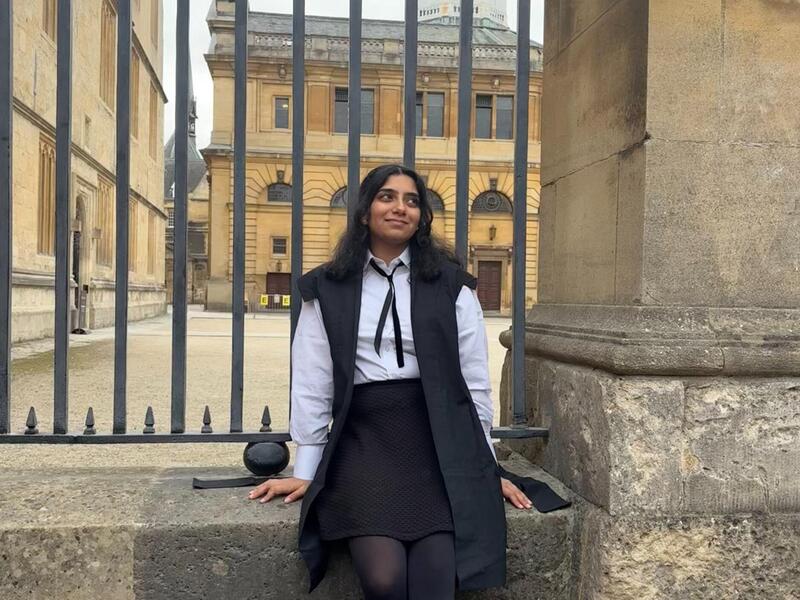
Dec. 11, 2024
As fashion and statement, Radical Jewelry Makeover shows off a community’s sparkle and artistry
Share this story
Can jewelry change the world?
“I do think you can change minds – one mind at a time,” said Susie Ganch, an associate professor of metals in Virginia Commonwealth University’s School of the Arts.
In 2007, Ganch and colleague Christina Miller founded Radical Jewelry Makeover, a traveling art project powered by local residents and artists.
RJM installments begin with the “mining” of community jewelry boxes. Residents donate jewelry, which volunteers – including metalsmiths, professors and students – then assess and sort. Participating artists receive pieces that they can melt down, take apart and revamp as they see fit. Once complete, the made-over jewelry is exhibited for purchase at local museums and galleries.
After an incredibly popular first exhibition, Ganch realized that RJM installments could make a lasting and wide-ranging impact.
“It’s so exciting, back in 2007 when we saw that line around the block, Christina and I were like, ‘Oh, my God, jewelry can change the world,’” Ganch said. “I continue to do the project because it remains vital in that way.”

Originally a geologist, Ganch planned to work in mineral exploration. While finishing her degree surrounded by the Rocky Mountains in Utah, she had a revelation.
“Walking these amazing landscapes, seeing the most beautiful places that I’d ever seen, I was like, ‘Wow, I am proposing holes to be dug in these amazing places,’” Ganch said.
Not wanting to promote such destruction, she left mineral exploration for metalsmithing. Yet she soon faced another ethical challenge: The very materials she worked with as an artist came from the same practices she had rejected. This sparked her passion and dedication in educating others on how to ethically work with metal in the jewelry industry.
Kathleen Kennedy, now co-director of RJM, experienced this education firsthand as a VCUarts student of Ganch’s and as a participant in the project’s first installment.
“The project itself had a really big effect on my outlook as an artist and my studio practice,” Kennedy said. “I hadn’t really thought about my effect, my personal effect, on the planet or the environment before. Doing this project opened my eyes to how I was a part of this larger food chain and that the actions I take affect it.”
Each RJM installment brings a new perspective to participants. Many donations include handwritten notes containing anecdotes or details about where the jewelry came from. For some, by donating, they are allowing themselves to let go of bittersweet or painful memories.

“With the project, there’s a lot of layers, because jewelry is a complicated thing,” Ganch said. “Jewelry helps communicate things that are important to us. Like being partnered with somebody, we pass pieces on to our kids, or [wear] a talisman to indicate the practice of religion.” This nonverbal communication is a topic she speaks to during installments while artists create the made-over pieces to go back out into the world.
Since RJM’s debut, installments have occurred in 13 states, usually with a college serving as the project’s hub. In 2022, the program traveled to Scotland through a collaboration with the Scottish Goldsmiths Trust and local university metal programs. Most recently, RJM opened an online store that offers made-over jewelry pieces worldwide.
The online store launched in August through a partnership with Ethical Metalsmiths, a nonprofit dedicated to the education, action and connection of ethical mining practices. RJM can market the works of art to wide audiences and continue to spread its mission without the barriers of location.
But at the core, it’s local communities that are at the heart of RJM – and that make it possible. It is working on installments for early 2025 with universities in Richmond, Norfolk and Farmville, as well as in Lawrence, Kansas, and Springfield, Missouri.
The kindness of donors has continually surprised the Ganch and Kennedy. Last year, a former jewelry store owner provided nearly $40,000 of precious materials. After finding the woman’s contact information, RJM delivered a personal thank-you – and a coupon for a free piece of jewelry refashioned for the installment.
“I feel like something like that happens, maybe not quite to that magnitude,” at every installment, Kennedy said. “But something like that – where there’s just this generosity of donors that happens at every project, which is kind of amazing.”

Subscribe to VCU News
Subscribe to VCU News at newsletter.vcu.edu and receive a selection of stories, videos, photos, news clips and event listings in your inbox.



